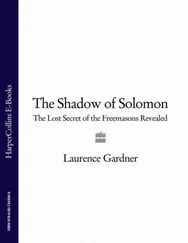492 R. B. Alley et al., “Abrupt Increase in Greenland Snow Accumulation at the End of the Younger Dryas Event,” Nature 362 (1993): 527-529, DOI:10.1038/362527a0.
493 The new CIA climate-change center will assess “the national security impact of phenomena such as desertification, rising sea levels, population shifts, and heightened competition for natural resources.” CIA Press Release, “CIA Opens Center on Climate Change and National Security,” September 25, 2009, www.cia.gov/news-information/press-releases-statements/center-on-climate-change-and-national-security.html (accessed November 26, 2009). See also J. M. Broder, “Climate Change Seen as Threat to U.S. Security,” The New York Times, August 8, 2009.
494 M.B. Burke et al., “Warming Increases the Risk of Civil War in Africa,” PNAS 106, no. 49 (2009): 20670-20674, www.pnas.org/cgi/DOI/10.1073/pnas.0907998106.
495 The most famous and dramatic reversal is the so-called “Younger Dryas” event, an abrupt return to nearly ice-age conditions that began suddenly about 12,700 years ago, then persisted nearly 1,300 years before resumption of warming. Its cause and also the cause of the 8.2 ka event is thought to be a shutdown in ocean thermohaline circulation owing to freshening of the North Atlantic, as will be described shortly. For reviews of the 8.2 ka event, see R. B. Alley, A. M. Ágústsdóttir, “The 8k Event: Cause and Consequences of a Major Holocene Abrupt Climate Change,” Quaternary Science Reviews 24 (2005): 1123-1149; and E. R. Thomas et al., “The 8.2 ka Event from Greenland Ice Cores,” Quaternary Science Reviews 26 (2007): 70-81.
496 Peter Schwartz, Doug Randall, “An Abrupt Climate Change Scenario and Its Implications for United States National Security” (October 2003), 22 pp., www.accc.gv.at/pdf/pentagon_climate_change.pdf (accessed September 27, 2009).
497 The flood path for the smaller 8.2 ka event was probably through the Hudson Strait. D. C. Barber et al., “Forcing of the Cold Event of 8,200 Years Ago by Catastrophic Drainage of Laurentide Lakes,” Nature 400 (July 22, 1999): 344-348, DOI:10.1038/22504. It is also hypothesized that the Younger Dryas event was triggered by a flood draining ancient Lake Agassiz through the St. Lawrence Seaway, or possibly a longer route through the Mackenzie River and Arctic Ocean to the North Atlantic. L. Tarasov, W. R. Peltier, “Arctic Freshwater Forcing of the Younger Dryas Cold Reversal, Nature 435 (June 2, 2005): 662-665, DOI:10.1038/nature03617.
498 The story begins with W. S. Broecker, D. M. Peteet, D. Rind, “Does the Ocean-Atmosphere System Have More than One Stable Mode of Operation?” Nature 315 (1985): 21-26. A recent development is Z. Liu et al., “Transient Simulation of Last Deglaciation with a New Mechanism for Bølling-Allerød Warming,” Science 325 (2009): 310-314.
499 A. K. Rennermalm et al., “Relative Sensitivity of the Atlantic Meridional Overturning Circulation to River Discharge into Hudson Bay and the Arctic Ocean,” Journal of Geophysical Research 112 (2007), G04S48, DOI:10.1029/2006JG000330. The IPCC AR4 (2007) gave >90% chance the thermohaline conveyor will remain functioning for the next century.
500 Even at the lowest carbon dioxide scenarios, with stabilization at 450 ppm, this critical threshold is eventually crossed in thirty-four out of thirty-five stabilization scenarios. J. M. Gregory et al., “Climatology: Threatened Loss of the Greenland Ice-Sheet,” Nature 428 (April 8, 2004): 616, DOI:10.1038/428616a.
501 Table 1, G. A. Milne et al., “Identifying the Causes of Sea-Level Change,” Nature Geoscience 2 (June 14, 2009): 471-478, DOI:10.1038/ngeo544. However, keep in mind the Earth had 70% more ice then than it does today, so a four-meters-per-century sea-level rise is not likely to be repeated.
502 Ibid., 496.
503 Ice sheets help to preserve their own existence by creating an elevated surface at high, cold altitudes and by reflecting back much of the sun’s energy. If Greenland’s ice sheet were removed, temperatures over its low, dark bedrock surface would be much warmer than today and the ice sheet unlikely to form again.
504 Especially Shanghai, Osaka-Kobe, Lagos, and Manila. Also affected will be Buenos Aires, Chennai, Dhaka, Guangzhou, Istanbul, Jakarta, Karachi, Kolkata, Los Angeles, Mumbai, New York, Rio de Janeiro, Shenzhen, and Tokyo.
505 Geological data suggests the WAIS collapsed 400,000 years ago, and perhaps even 14,500 years ago. P. U. Clark et al., “The Last Glacial Maximum,” Science 325, no. 5941 (August 7, 2009): 710-714, DOI:10.1126/science.1172873. It is also clear the WAIS is currently losing mass, and there is evidence this has been happening for the past 15,000 years in response to rising sea levels initiated by deglaciation in the northern hemisphere. Thus, even limiting greenhouse warming may not lead to the desired stabilization of the ice sheet. J. Oerlemans, “Freezes, Floes, and the Future, Nature 462 (2009): 572-573, DOI:10.1038/462572a.
506 Sea levels are not the same everywhere but vary owing to water pile-up from currents, gravitational attraction, water temperature, crustal rebound, and other factors. The above-average sea-level rise along the U.S. coastline is shown by J. X. Mitrovica et al., “The Sea-Level Fingerprint of West Antarctic Collapse,” Science 323, no. 5915 (February 6, 2009): 753, DOI:10.1126/science.1166510; and J. L. Bamber et al., “Reassessment of the Potential Sea-Level Rise from a Collapse of the West Antarctic Ice Sheet,” Science 324, no. 5929 (May 15, 2009): 901-903, DOI:10.1126/science.1169335. The latter study also suggests a global average sea-level increase of 3.2 meters for a WAIS collapse, lower than the five-meter estimate by the IPCC AR4.
507 For more, see D. G. Vaughan, R. Arthern, “Why Is It Hard to Predict the Future of Ice Sheets?” Science 315, no. 5818 (2007): 1503-1504, DOI:10.1126/science.1141111; and R. B. Alley et al., “Understanding Glacier Flow in Changing Times,” Science 322 (2008): 1061-1062.
508 S. A. Zimov et al., “Permafrost and the Global Carbon Budget,” Science 312, no. 5780 (2006): 1612-1613, DOI:10.1126/science.1128908; E. A. G. Schuur et al., “Vulnerability of Permafrost Carbon to Climate Change: Implications for the Global Carbon Cycle,” Bioscience 58, no. 8 (2008): 701-714; C. Tarnocai et al., “Soil Organic Carbon Pools in the Northern Circumpolar Permafrost Region,” Global Biogeochemical Cycles 23, GB2023 (2009), DOI:10.1029/2008GB003327.
509 For more on the challenges surrounding this problem, see S. E. Trumbore, C. I. Czimczik, “An Uncertain Future for Soil Carbon,” Science 321 (2008): 1455-1456.
510 By drilling cores to the bottom of peatlands and radiocarbon dating their age, we know that northern peatlands started spreading quickly about 11,700 years ago as the Younger Dryas cold period ended. This methane shows up in ice cores of Greenland and Antarctica. L. C. Smith et al., “Siberian Peatlands a Net Carbon Sink and Global Methane Source since the Early Holocene,” Science 303 (2004): 353-356; and G. M. MacDonald et al., “Rapid Early Development of Circumarctic Peatlands and Atmospheric CH 4and CO 2Variations,” Science 314 (2006): 285-288. Sweden study is E. Dorrepaal et al., “Carbon Respiration from Subsurface Peat Accelerated by Climate Warming in the Subarctic,” Nature 460 (2009): 616-619, DOI:10.1038/nature08216. The two West Siberia studies are K. E. Frey and L. C. Smith, “Amplified Carbon Release from Vast West Siberian Peatlands by 2100,” Geophysical Research Letters 32, L09401 (2005), DOI:10.1029/2004GL022025, 2005; and D. W. Beilman et al., “Carbon Accumulation in Peatlands of West Siberia over the Last 2000 Years,” Global Biogeochemical Cycles 23, GB1012 (2009), DOI:10.1029/2007GB003112. Alaska study is E. A. G. Schuur et al., “The Effect of Permafrost Thaw on Old Carbon Release and Net Carbon Exchange from Tundra,” Nature 459 (2009): 556-559, DOI:10.1038/nature08031.
Читать дальше












